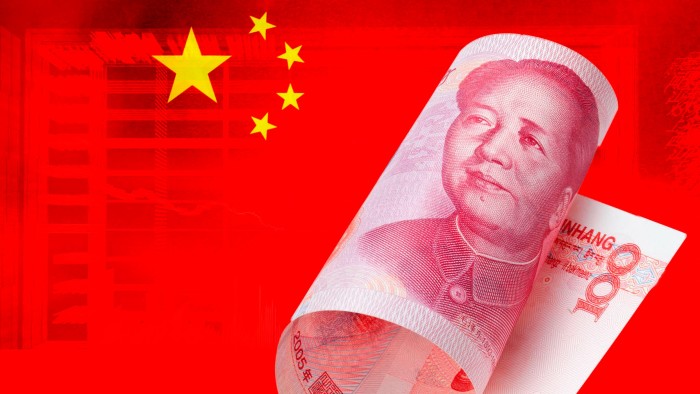Against the odds, China’s push to internationalise its currency is making gains

Roula Khalaf, Editor of the FT, selects her favourite stories in this weekly newsletter.
The writer is chief economist for the Asia-Pacific at Natixis and senior research fellow at the Bruegel Institute
It has been an extraordinary year for the renminbi. On the one hand, it has clearly disappointed investors, who were expecting the currency to appreciate as the Chinese economy moved out of zero-Covid policies at the end of 2022.
Instead, after a short respite, it depreciated about 8.5 per cent against the US currency from January lows until it found a floor at about 7.30 renminbi per dollar. The trend reflected the stubborn weakness of the Chinese economy and the large capital outflows. More recently the renminbi has appreciated but that is in line with other currencies as the US Federal Reserve shifted to a less hawkish tone on interest rates.
However, that very same weak renminbi has achieved something quite impressive in 2023: a fast increase in its cross-border use. Since China started to push for the internationalisation of its currency in 2004, its share in global payments largely remained stagnant. But this year its share went from 1.9 per cent in January 2023 to 3.6 per cent in October.
Such a share remains low compared with the dollar (47.25 per cent) and the euro (23.36 per cent). But the growth could be pointing to a change. And the People’s Bank of China has reported a steep increase in renminbi-denominated current account transactions. Nearly 30 per cent of the trade in goods and services in and out of the country was settled in the currency.
When looking at the main drivers for this change, several issues stand out. Firstly, China seems increasingly keen to settle its trade in renminbi. The reasons behind this seem to go beyond reducing hedging costs, which have always existed. It is also, of course, driven by geopolitical concerns.
Reducing the dependence on the US dollar or other G7 currencies has become more important for China, given the step-up in western sanctions on Russia after it invaded Ukraine in 2022 and tensions with the US over Taiwan. These sanctions also seem to have been a catalyst for other countries to accept the renminbi for trade settlements. The fact that China had its own international payment system (Cips) ready to be used when western sanctions hit Russia has undoubtedly helped. Some renminbi international payments settled through Cips, do not use the Swift interbank messaging system, which makes them very difficult to be traced. This also means that the share of renminbi for global cross-border transactions might be underestimated.
Beyond the establishment of Cips, Chinese authorities have introduced other important instruments to support renminbi internationalisation, such as bilateral currency swaps between the PBoC and more than 30 central banks. These swap lines used to sit idle in host central banks but they are now starting to be withdrawn given some emerging countries’ growing financial needs. A notable example is Argentina, which has already withdrawn the equivalent of $1bn in renminbi from its swap line to cover repayments to the IMF. Chinese authorities have also stepped up efforts to increase renminbi liquidity offshore by setting up clearing centres for the currency.
While all of these institutional arrangements can certainly increase offshore renminbi liquidity, this will remain limited given the currency is not convertible. In other words, companies will find it hard to use the renminbi they earned from their exports to China for anything else but the purchase of goods with the Chinese currency or the payment of debt with it. By accepting payments — or funding — in renminbi, countries are effectively increasing their dependence on China.
On this latter point, Chinese banks are also using the renminbi for their lending overseas. This has increased to 28 per cent of total cross-border lending in October 2023 from 17 per cent at the end of 2021. Much higher funding costs in the dollar than in renminbi are making it easier for host countries to accept funding in the Chinese currency. Large capital outflows from China also add to the country’s reluctance to lend in dollars.
At the same time though, the renminbi is not making the same strides as an investment currency. The share of foreign investment in China’s onshore markets has been shrinking for 18 months. This is especially true for foreign fixed-income investors. Their share on onshore bond holdings has dropped from 3.5 per cent at the peak to 2.5 per cent in June 2023.
This growing dichotomy can be explained by China’s special characteristics. On the one hand, China’s economic dominance is translated into leverage to impose its currencies. At the same time, the lack of convertibility of the Chinese currency makes it very difficult for investors keen to buy up renminbi assets.
Comments